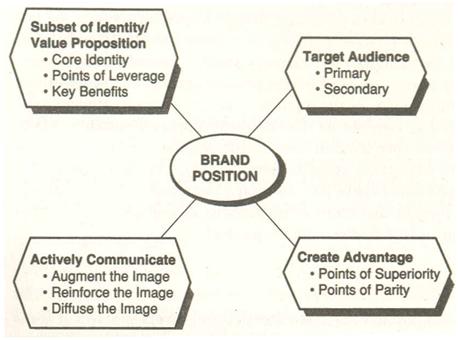In order to understand the meaning and importance of brand attributes, and their contribution to the creation of memorable and attractive brands, it is important to understand the significant difference between products and brands. A product is purely a physical thing, defined by physical attributes. For example, cola is a physical product made from a combination of caramel, caffeine, sugar, carbonated water and other colors and flavors. In contrast, a brand is a defined image and name associated with a specific firm’s products, and used to differentiate these products from those of competitors. As a result, a brand effectively represents the promise of quality for consumers, and the promise that a product will meet certain standards and expectations. At the same time, a brand can also represent a conceptualization of the values that a product espouses, hence how these values can differentiate one product from another, and influence a consumer’sContinue reading
Brand Management
Branding of Services
Branding for Service Industries Although the principles for branding of goods and services are generally the same there occur some differences. These arise from the different natures of both categories. The main differences that influence branding policies are that services; Have a changing level of quality, The consumer has to become involved in the consumption of a service actively, They are intangible and not storable. When a brand in general gives the consumer more confidence in his choice this is even more important for services. Their quality and other features are more difficult to asses. Because of their intangibility and complexity it is harder for the customer to distinguish between the offers from the wide range of service companies are working in the market place. Brand Structures for Services Industries As for services, marketers use the companies name – a so called corporate brand – as the overall family brandContinue reading
Major Benefits of Branding
Branding is undertaken to help support sales and revenue generation; stimulating initial sales and then retain sales. By creating a strong brand name with the associations identified above in terms of brand identity, the consumers perceptions may be influenced which potential to impact on the purchase decision. When a consumer makes a purchase, they will traverse the purchase process model, usually defined as occurring in five stages; need/desire recognition, information search, evaluation of alternatives, purchase decision and post purchase behavior. Branding has the potential to impact across all of these stages, potentially influencing the process in favor of that particular brand. Strong brands have the potential to stimulate the perception of a need or a desire; as seen with Coca-Cola and the sound of the bottle opening included in the advertisements, often accompanied by images of an apparently refreshing drink, seeking to stimulate thirst. Apple have also been good atContinue reading
Characteristics of Brand Positioning
The core thought behind brand positioning is the idea that each brand (if at all noticed) occupies a particular point or space in the individual consumer’s mind, a point that is determined by that consumer’s perception of the brand in question and in its relation to other brands. The spatial distance between the points in that consumer’s mind reflects the subject’s perception of similarity or dissimilarity between products and brands. Four Important Characteristics of Brand Positioning The four salient characteristics of brand positioning are:. 1. Look to the Core Identity The core identity by definition represents the central, timeless essence of the brand. Thus the most unique and valuable aspects of the brand are often represented in the core identity. Further, there should be a cluster of brand elements surrounding each core identity component that (in addition to giving it richness and texture) opens up multiple execution alternatives. Finally, theContinue reading
Brand Personality
Brand personality is as if ‘making the brand come alive’. The attribution of human personality traits (seriousness, warmth, imagination, etc.) to a brand as a way to achieve differentiation. Usually done through long-term above-the-line advertising and appropriate packaging and graphics. These traits inform brand behavior through both prepared communication / packaging, etc. and through the people who represent the brand – its employees. Brand personality is the way in which a brand speaks of its products or services shows what kind of person it would be if it were human. A brand without a personality has trouble gaining awareness and developing a relationship with customers. Brand image refers to the rational measurements like quality, strength, and flavor. Brand personality explains why people like some brands even when there is no physical difference between them. Brand personality is the emotional associations of the brand and brand image is the physical featuresContinue reading
New Products and Brand Extensions
When a firm introduces a new product, it has three main choices as to how to brand it: It can develop a new brand, individually chosen for the new product. It can apply, in some way, one of its existing brands. It can use a combination of a new brand with an existing brand. A brand extension is when a firm uses an established brand name to introduce a new product. When a new brand is combined with an existing brand, the brand extension can also be called a sub-brand. An existing brand that gives birth to a brand extension is referred to as the parent brand. If the parent brand is already associated with multiple products through brand extensions, then it may also be called a family brand. In line extension, the parent brand is used to brand a new product that targets a new market segment within aContinue reading


